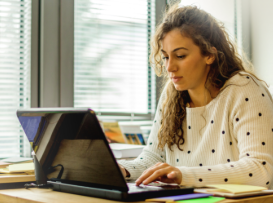Online learning has transformed the way students access education, offering flexibility, accessibility, and convenience. While it opens new doors for learners around the world, it also presents a unique set of challenges. Understanding these hurdles can help students, parents, and educators work together to create better learning experiences. Here are some of the top challenges students often face in online learning:
1. Lack of In-Person Interaction
One of the most commonly mentioned challenges is the absence of face-to-face communication. Students miss the chance to connect with peers and instructors in a traditional classroom setting, which can make the learning experience feel isolating at times. This lack of social engagement may also affect motivation and emotional well-being.
Friendly tip: Encourage virtual group study sessions or join online communities related to your course to stay connected and engaged.
2. Time Management Difficulties
With the freedom to learn at their own pace, some students struggle with managing their schedules. Balancing school, home life, and personal responsibilities without a structured routine can lead to procrastination or missed deadlines.
Friendly tip: Use digital planners or to-do list apps to organize your day and stick to a consistent study routine.
3. Technical Issues and Limited Access
Not every student has access to a reliable internet connection or up-to-date devices, which can disrupt their learning experience. Technical difficulties such as software glitches or platform outages can also cause frustration and hinder progress.
Friendly tip: Whenever possible, download course materials for offline use and reach out to instructors for alternate solutions if tech problems arise.
4. Lack of Hands-On Learning
Certain subjects—like science labs, art, or technical trades—require hands-on experience, which is often difficult to replicate in an online environment. This can make it challenging for students to fully grasp certain concepts or practice essential skills.
Friendly tip: Look for virtual simulations, DIY kits, or video demonstrations to enhance your understanding of practical topics.
5. Reduced Motivation and Focus
Learning from home can come with many distractions—from household noise to the temptation of social media. Without the physical presence of a teacher, students might find it harder to stay motivated and focused on their tasks.
Friendly tip: Create a quiet, dedicated study space and take short breaks to refresh your mind and improve concentration.
6. Limited Feedback and Support
In a traditional classroom, students can ask questions and receive immediate answers. Online learning platforms may not offer the same level of interaction, leading some students to feel uncertain about their progress or confused about course content.
Friendly tip: Don’t hesitate to reach out to instructors via email or discussion boards, and take advantage of virtual office hours when available.


